SLOWING ECONOMY OR MORE INFLATION?
Notwithstanding the expectations for a Fed pivot, along with expectations for inflation to get a lot worse, there are numerous indicators that the economy is slowing considerably.
Evidence of that slowing has shown itself in several areas: 1) economic activity, 2) commodities prices 3) stocks and bonds, and 4) interest rates. Let's take a look...
ECONOMIC ACTIVITY
Economic activity provides a measure of judgement for our efforts to provide for ourselves, enhance lifestyle, and grow in productive fashion as a society. There are three charts - retail sales, auto and light truck sales, and housing starts - below and comments after each chart...
Real Retail Sales Historical Chart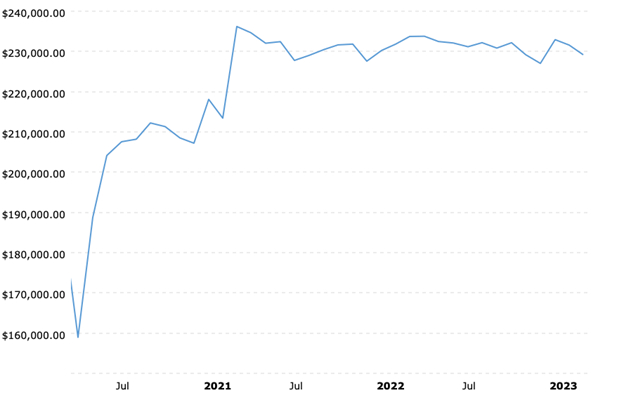
'Real' retail sales means the numbers have been adjusted for inflation. Looking at the chart, retail sales have been reasonably stable; not just from the onset of the Fed's public efforts to raise interest rates, but dating back one year before that to early 2021.
There is a slight downward slant over the period but nothing terribly unusual or negative; unless one was expecting continued growth in sales as had been seen post-Covid. The next chart follows...
Auto and Light Truck Sales Historical Chart
The above chart for Auto And Light Truck Sales is an activity chart, NOT a price chart for vehicles. The current level of sales activity is down sharply since its post-Covid peak and there is increasing volatility. The extreme volatility shown on the chart is not indicative of a stable growth pattern. Our third chart, Housing Starts, is next...
Housing Starts Historical Chart 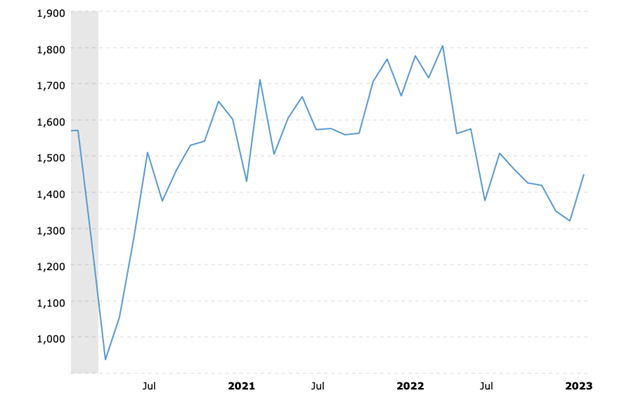
As seen before with auto sales vs. vehicle prices, we see in the chart immediately above that high prices for residential properties don't translate to new construction demand.
COMMODITY PRICES
Another area that seems to be consistent with a slowing economy is commodity prices. We'll look at three commodities below: lumber, wheat, and cotton...
Lumber Prices Historical Chart 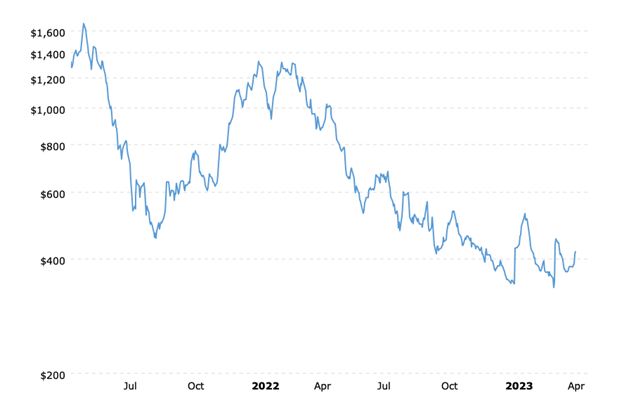
Wheat Prices Historical Chart 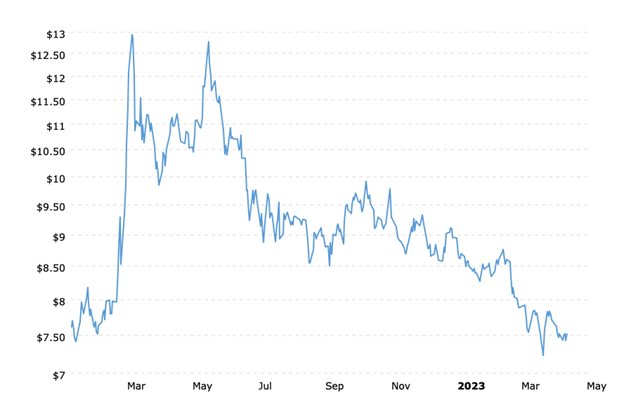
Cotton Prices Historical Chart 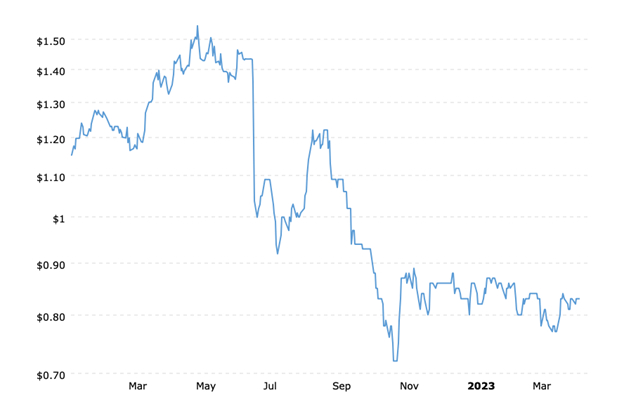
Price history shown above for all three commodities - lumber, wheat, and cotton - reflects sharply lower prices since the onset of the Fed's policy to raise interest rates. Other commodities show a similar pattern.
STOCKS AND BONDS
Our next area of concern is the financial markets. Below are charts of the S&P 500, the NASDAQ, and the 10 Year U.S. Treasury Bond...
S&P 500 Index Historical Chart 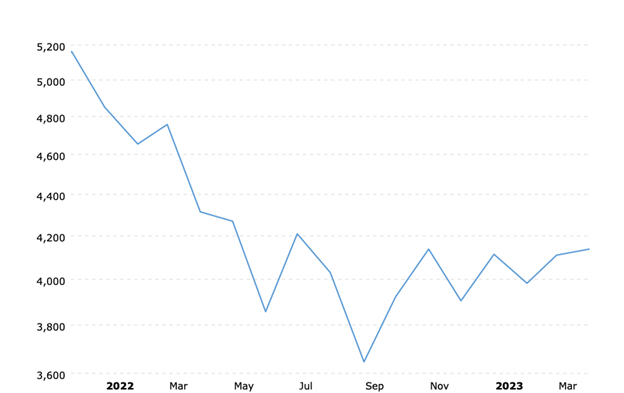
NASDAQ Composite Historical Chart 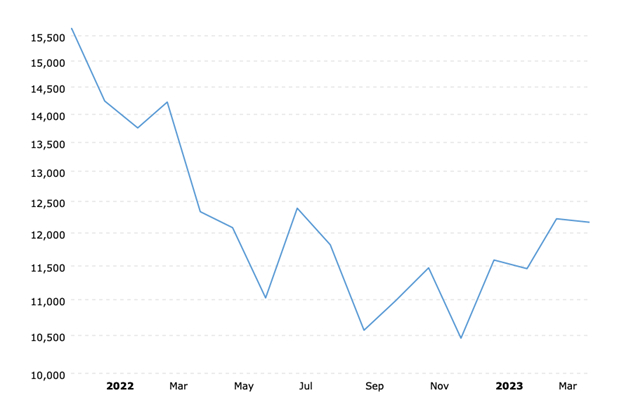
Long-term U.S. Treasury Bond ETF 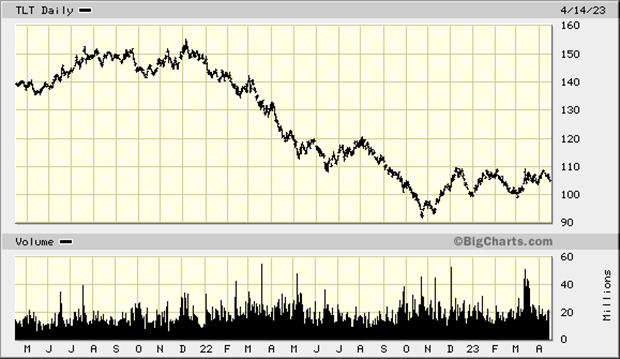
Both stocks and bonds have fallen in tandem and concurrent with the increase in interest rates. Bonds, of course, are the inverse reflection of interest rates, so there is no need to analyze the price action, or wonder about any correlation. Lower bond prices and higher interest rates are the same thing.
Declining stock prices over the past fourteen months indicate concerns about company earnings associated with a slowing economy. This is a concern brought into focus by rising interest rates and their effects on financial liquidity, as well as the potential for recession.
INTEREST RATES
Below are charts for U.S. Treasury rates and mortgage rates...
1 Year Treasury Rate Historical Chart 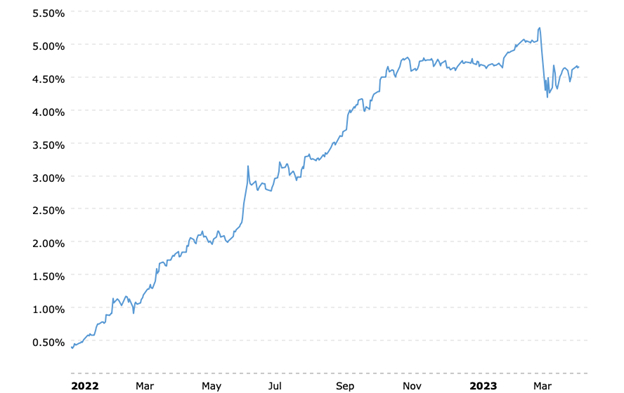
30 Year Fixed Mortgage Rate - Historical Chart 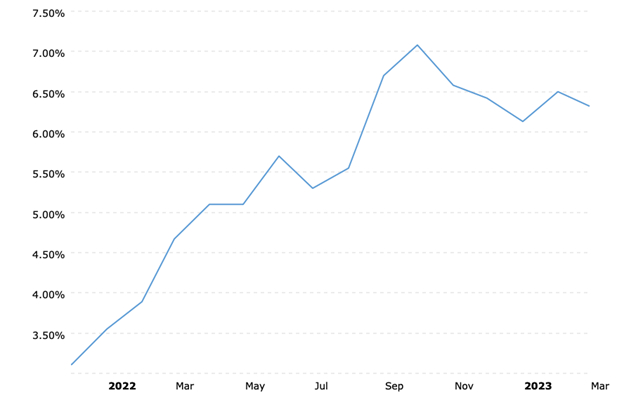
The sustained increase in interest rates over the past year and one-half has led to serious repercussions in the financial markets and the economy.
SUMMARY AND CONCLUSION
A slow and progressive unwinding of unsupportable and unsustainable levels of debt and activity financed by cheap and easy credit is taking its toll. In addition to the signs discussed in this article, we are now seeing bank failures and hearing about the huge amount of commercial real estate debt.
All of these things are cracks in the foundation of financial and economic stability. In other words, it is not just a problem of a slowing economy. It is much worse than that and will take a long time to work itself out.
Written by Kelsey Williams, Neptune Global
- English (UK)
- English (India)
- English (Canada)
- English (Australia)
- English (South Africa)
- English (Philippines)
- English (Nigeria)
- Deutsch
- Español (España)
- Español (México)
- Français
- Italiano
- Nederlands
- Português (Portugal)
- Polski
- Português (Brasil)
- Русский
- Türkçe
- العربية
- Ελληνικά
- Svenska
- Suomi
- עברית
- 日本語
- 한국어
- 简体中文
- 繁體中文
- Bahasa Indonesia
- Bahasa Melayu
- ไทย
- Tiếng Việt
- हिंदी
Signs of a Slowing Economy
Latest comments
Loading next article…
Install Our App
Risk Disclosure: Trading in financial instruments and/or cryptocurrencies involves high risks including the risk of losing some, or all, of your investment amount, and may not be suitable for all investors. Prices of cryptocurrencies are extremely volatile and may be affected by external factors such as financial, regulatory or political events. Trading on margin increases the financial risks.
Before deciding to trade in financial instrument or cryptocurrencies you should be fully informed of the risks and costs associated with trading the financial markets, carefully consider your investment objectives, level of experience, and risk appetite, and seek professional advice where needed.
Fusion Media would like to remind you that the data contained in this website is not necessarily real-time nor accurate. The data and prices on the website are not necessarily provided by any market or exchange, but may be provided by market makers, and so prices may not be accurate and may differ from the actual price at any given market, meaning prices are indicative and not appropriate for trading purposes. Fusion Media and any provider of the data contained in this website will not accept liability for any loss or damage as a result of your trading, or your reliance on the information contained within this website.
It is prohibited to use, store, reproduce, display, modify, transmit or distribute the data contained in this website without the explicit prior written permission of Fusion Media and/or the data provider. All intellectual property rights are reserved by the providers and/or the exchange providing the data contained in this website.
Fusion Media may be compensated by the advertisers that appear on the website, based on your interaction with the advertisements or advertisers.
Before deciding to trade in financial instrument or cryptocurrencies you should be fully informed of the risks and costs associated with trading the financial markets, carefully consider your investment objectives, level of experience, and risk appetite, and seek professional advice where needed.
Fusion Media would like to remind you that the data contained in this website is not necessarily real-time nor accurate. The data and prices on the website are not necessarily provided by any market or exchange, but may be provided by market makers, and so prices may not be accurate and may differ from the actual price at any given market, meaning prices are indicative and not appropriate for trading purposes. Fusion Media and any provider of the data contained in this website will not accept liability for any loss or damage as a result of your trading, or your reliance on the information contained within this website.
It is prohibited to use, store, reproduce, display, modify, transmit or distribute the data contained in this website without the explicit prior written permission of Fusion Media and/or the data provider. All intellectual property rights are reserved by the providers and/or the exchange providing the data contained in this website.
Fusion Media may be compensated by the advertisers that appear on the website, based on your interaction with the advertisements or advertisers.
© 2007-2025 - Fusion Media Limited. All Rights Reserved.
